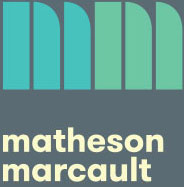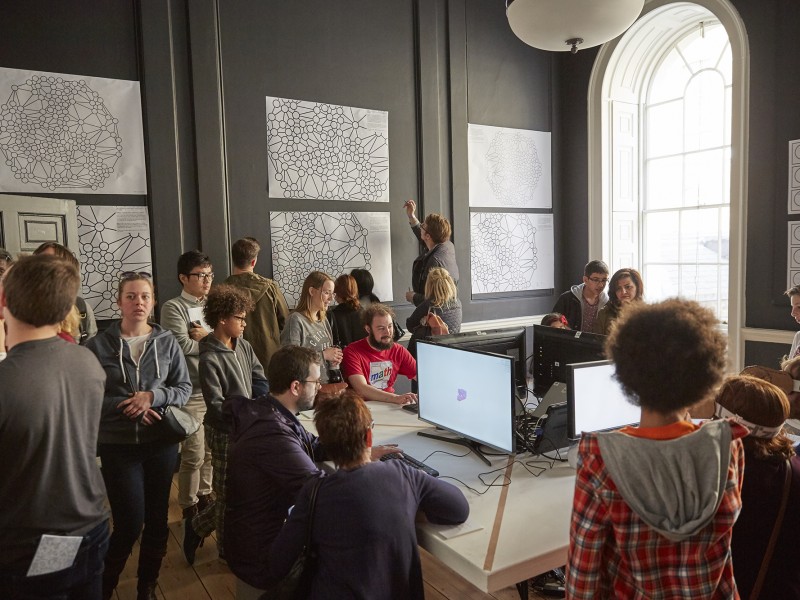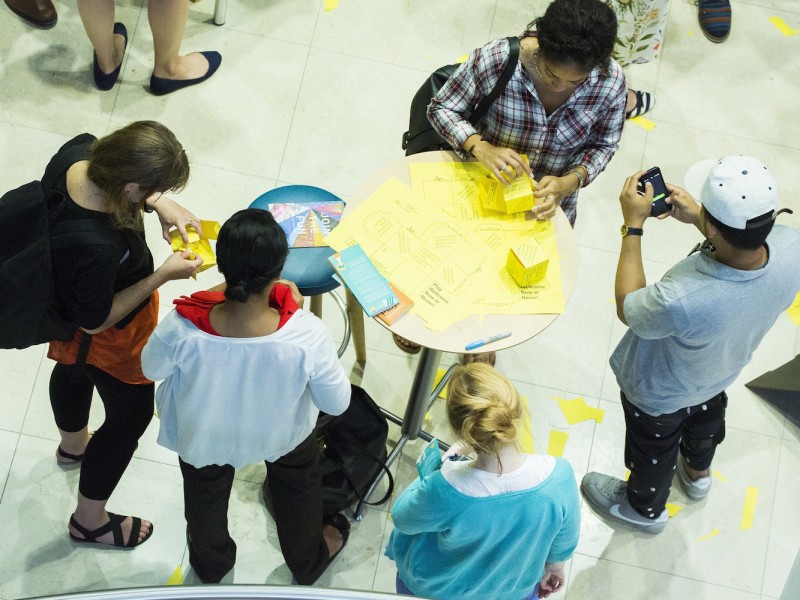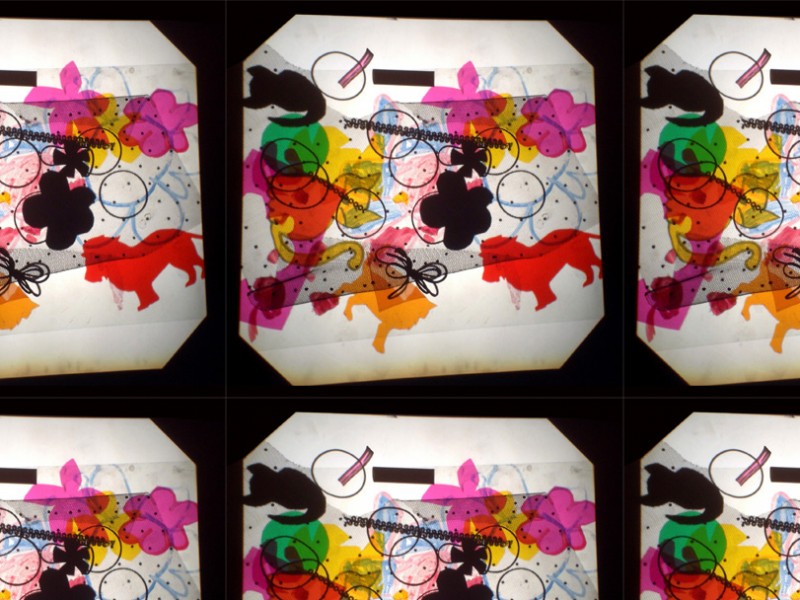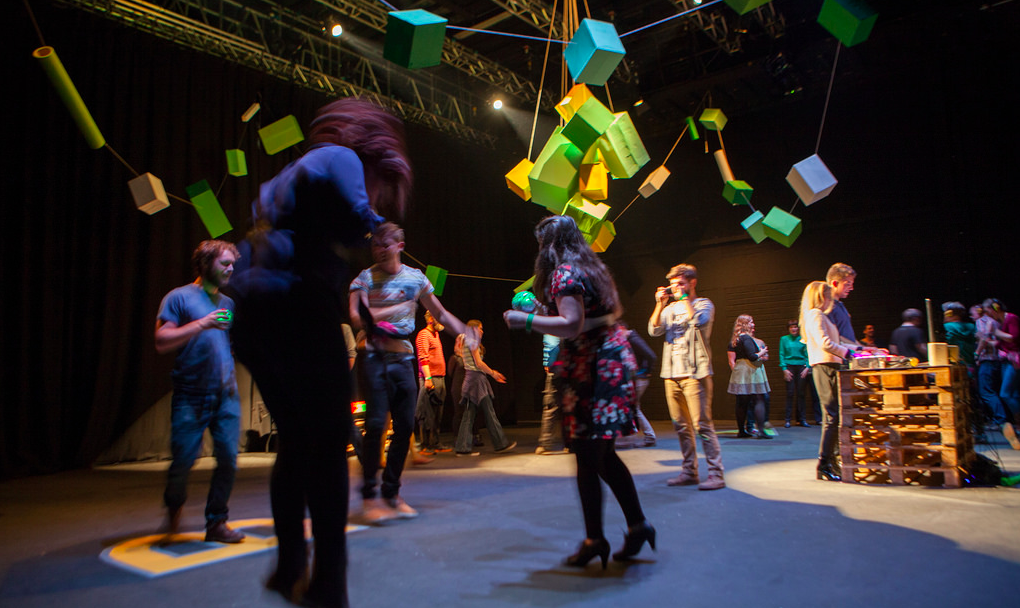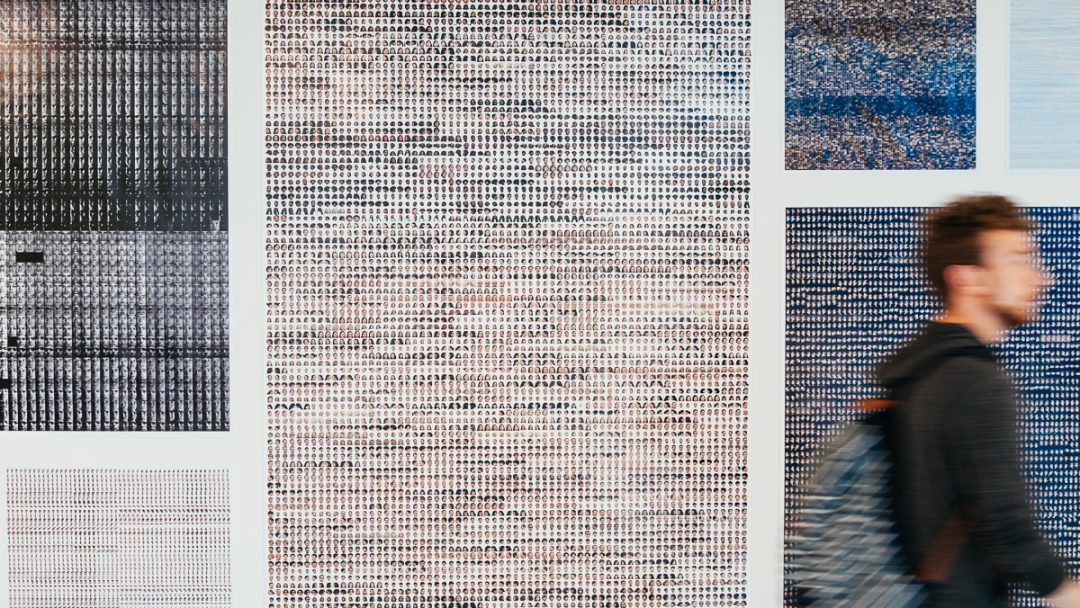As part of our research project for the King’s College London Arts and Humanities Festival, we’ve been interviewing different curators, designers, artists and architects about playful work for public space. This interview is with Sarah Brin, a writer, curator and public speaker who has a history of working with public space, new media, artist-made games, digital fabrication, public spaces, and participation. Among other things she’s been the Public Programs Manager at Autodesk’s Pier 9 Workshop, curated game exhibitions, and written extensively about games, play, and art.
The image above shows her with Sports!, an arcade cabinet she curated for Cooperative Gaming Co-Op at the Zero1 Biennial in San Jose.
US: You’ve created or curated a lot of work where you’re asking people to do something that wouldn’t normally be expected in that environment – so, games in visual arts contexts, say, or your art exhibition on a subway train. I’m curious about how you help people understand what’s being asked of them, and that a particular action is permitted in a space where it might not usually be allowed. Any particular tips or tricks?
SARAH: Every situation has different nuances, but I find that generally the best way is to just talk to people. For example, in an art museum, if I were to install a game alongside maybe some paintings or other non-touchable art, I’d make sure there was a chair to sit in, or a controller on a pedestal in front of a screen, preferably with some “it’s okay to touch!” signage. I’d watch how people interfaced with the work, and then, depending on the response, I’d modify how the work was presented. It can be really nice to have an in-gallery “Dungeon Master” to ask things like “do you want to play a game?” or “did you know you can touch this?” or “did you know that the artist made this entirely out of toilet paper?”
